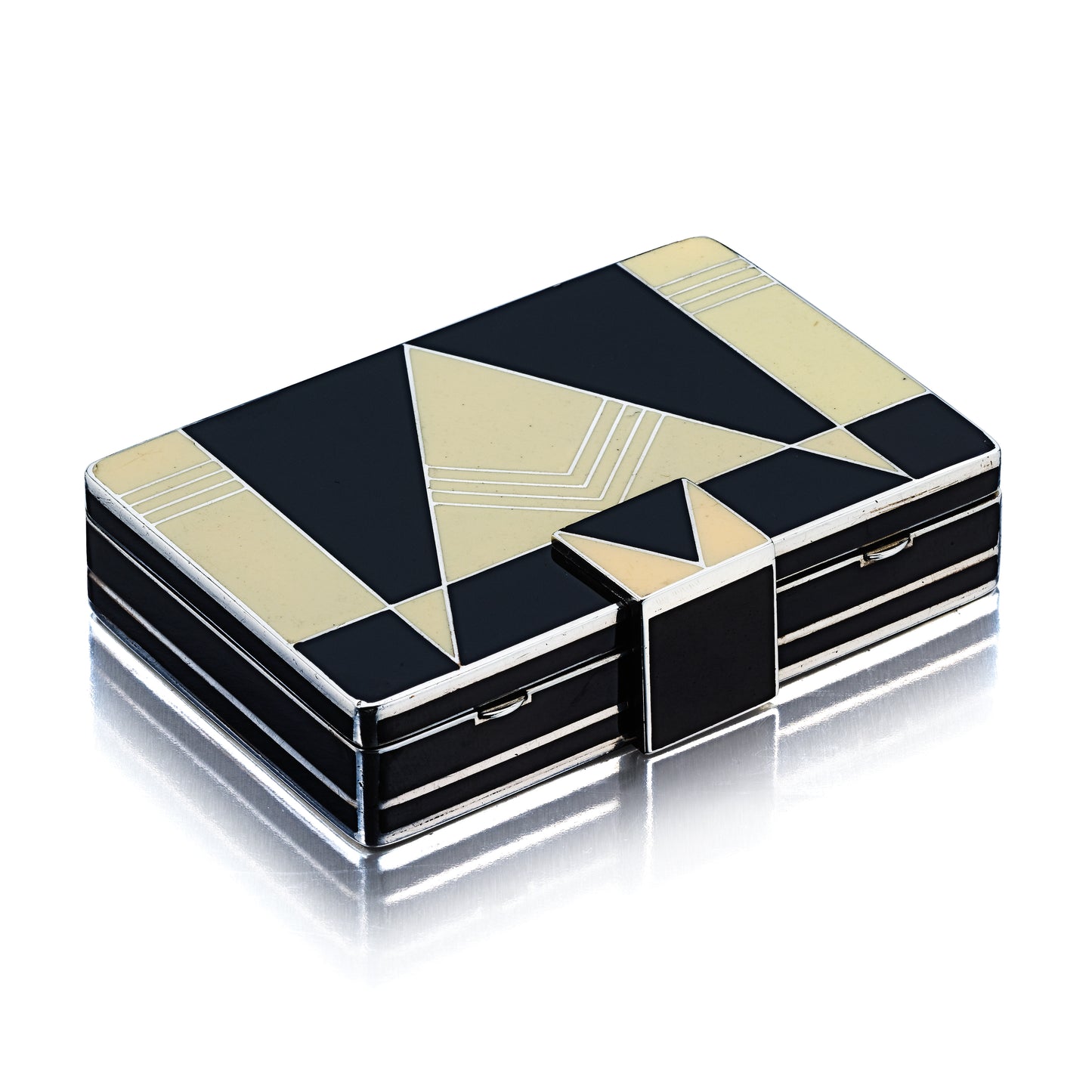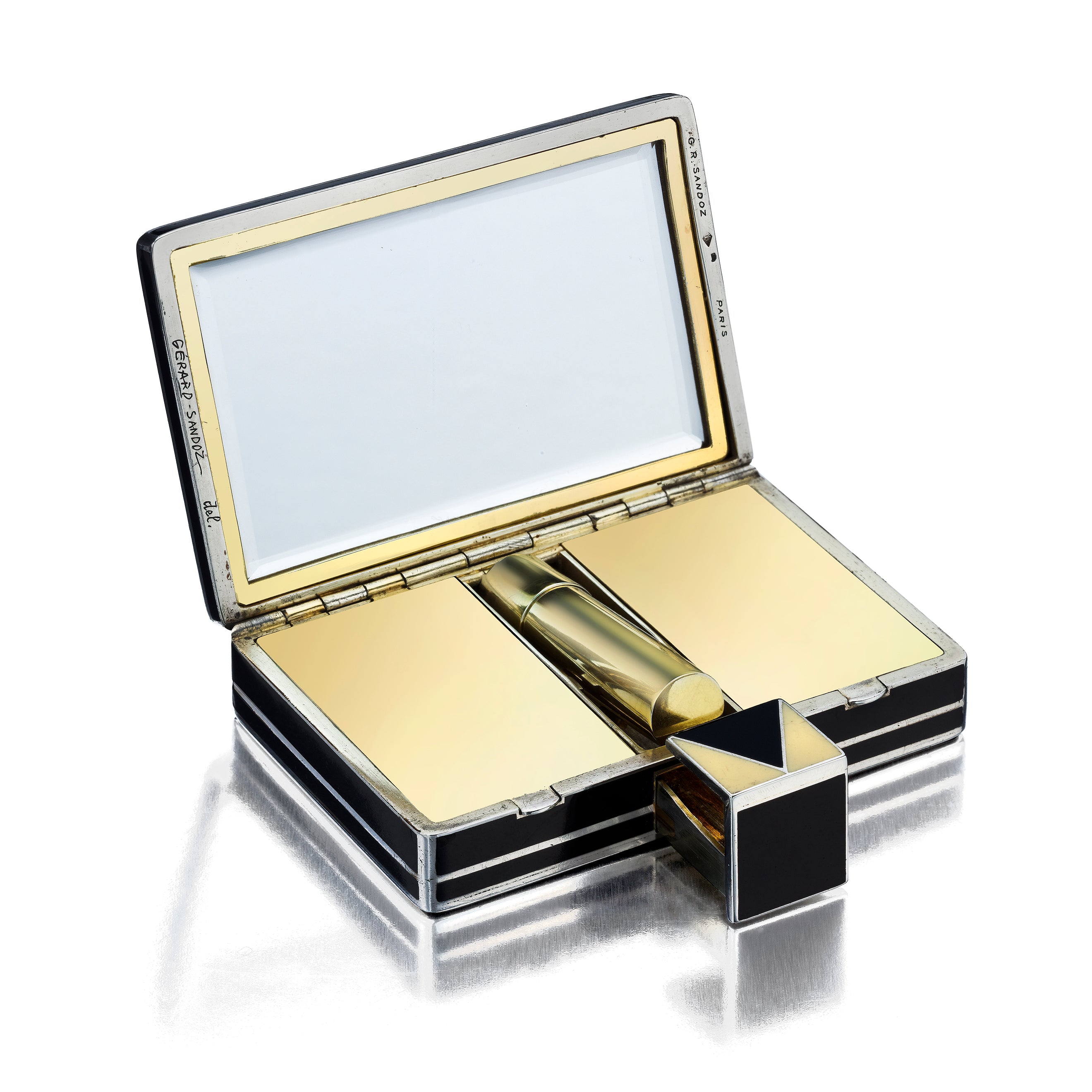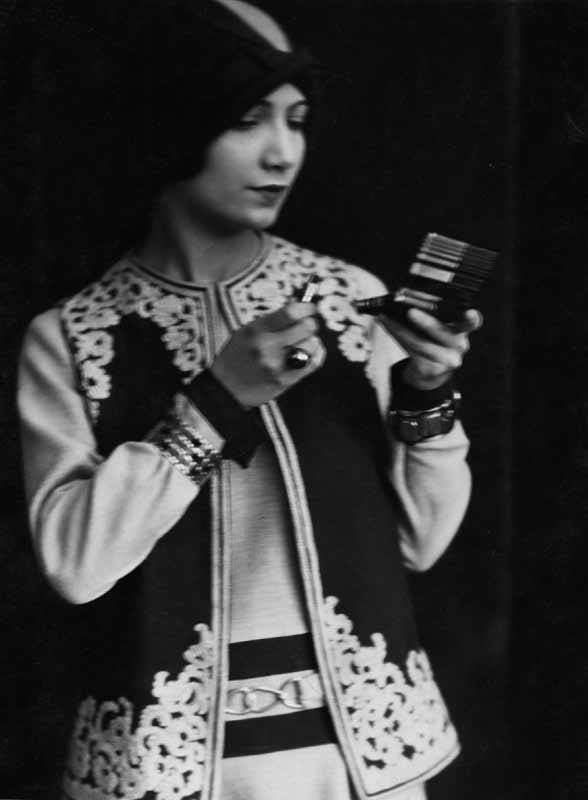ART DECO CREAM AND BLACK ENAMEL VANITY CASE BY GÉRARD SANDOZ, PARIS, CIRCA 1927
ART DECO CREAM AND BLACK ENAMEL VANITY CASE BY GÉRARD SANDOZ, PARIS, CIRCA 1927
SOLD
A vanity case composed of triangles and rectangles of cream and black enamel; fitted interior with two powder compartments and one lipstick; mounted in silver, with gilded interior; with French assay marks
- Signed G.R. Sandoz Paris, numbered 9965 and 870
- Measurements: 3 1/16 × 2 1/8 × 3 1/4 inches
Additional cataloguing
Certification
- A letter from Huguette Lombard-Sandoz stating the vanity case “was a gift from Gérard Sandoz to his wife, Juliette. When she died in 1933, Gérard Sandoz then passed the case to me, his daughter.”
Provenance
- Juliette Sandoz
- Huguette Lombard-Sandoz
Literature
- Mouillefarine, Laurence, and Évelyne Possémé, eds. Art Deco Jewelry. London: Thames & Hudson, 2009, p. 238.
- L’Art Vivant, August 15, 1927, p. 666.
Exhibitions
- Bijoux Art déco et Avant-Garde: Jean Després et les bijoutiers modernes, Musée des Arts Décoratifs, Paris, March 19–July 12, 2009.
Biography
Art Deco designer Gérard Sandoz was born into a family of clockmakers and jewelers in Paris in 1902. Instructed in modern art by his uncle Paul Follot, from an early age he contributed designs to Maison Sandoz. Also a poster designer and painter, his graphic influence is evident in his jewelry and objects. He exhibited at the 1925 Paris Exposition Internationale des Arts Décoratifs et Industriels Modernes and modern salons in Paris. He closed the firm in 1931 to focus on painting and cinema.
Significance
The 1920s were a time of glamour, when it was chic to accessorize with artfully designed accouterments Small, precious objects were a mark of sophistication in the Art Deco period. Boxes, desk clocks, vanity cases, and cigarette cases made in precious metals and richly enameled, ranked with the fine arts for design and workmanship. The most creative of these articles were analogous to the art of the era. In place of canvas and paint, designers worked in gold and silver with color provided by enamel. Gérard Sandoz was one of the most foremost makers of geometric jewelry and objects in this era.
Sandoz was a member of the influential Union des artistes modernes (UAM), a group made up of a few dozen artists who worked to reject the past and free their art from what they saw as extraneous decoration. Sandoz said, “A piece of jewelry must be simple, clear and be made without any unnecessary embellishments.” His decorative program was based on geometric massing inspired by the technological advances of the Machine Age. Besides jewelry and objects, Sandoz also created strong graphic advertising posters in the 1920s. These unusual constructions show how he was influenced by the Cubists and how he reduced machines, movement, and objects to their simplest geometric forms. His reductive methods and focus on pure design unhindered by the past led to the wonderful geometric pattern on this vanity case.
On this vanity case Sandoz explored layered triangles, a motif he often revisited. The flat sides of vanity and cigarette cases provided a wonderful surface for exploring decorative themes. In this objects, the artist carefully used cream and black enamel separated by lines of polished silver. The placement of each piece was considered to convey a dynamic sense of movement on a static form. A similar, but less elaborate cigarette case is in the collection of the Victoria & Albert Museum. An iconic object created by one of the foremost Art Deco jewelers for his wife, and later gifted to his daughter, this vanity case would be a striking and important addition to any collection.









